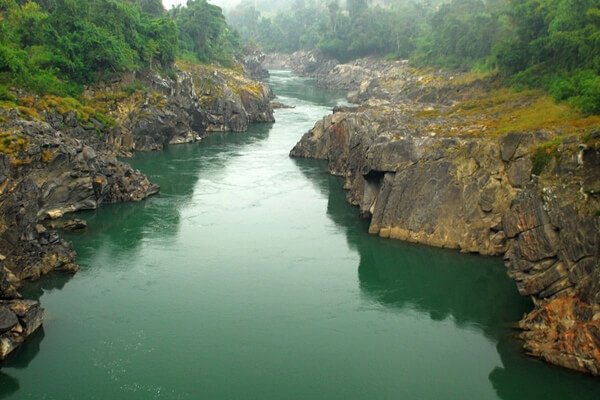Not just the mines of Kolar or Africa or the USA, but the flowing rivers of Assam, India, once had been a goldfield. Geographically the rivers of undivided Assam, which yielded gold, are Bhoroli, Dikrong and Subansiri, as per the “Report on the Administration of Assam”-editions of 1892-93 and 1901-02.
During the reign of Ahom King, Rajeshwar Singha (1751 to 1769 AD), gold was regularly washed from many rivers along the Assam valley; collected as much as 2500 ounces of gold every year from the region. During those days, gold was a tax collected against each individual per annum and went directly to the royal treasury.
Subansiri River, the highest carrier of gold particles, is known as “xuwon – xiri”(xuwon or huwon means gold and xiri or hiri is the flow) in the Assamese language.
A particular community of people, “Xonowal”(gold – washers), were engaged in thousands at these riverfronts to collect gold but was a hard nut to crack, of course.

Image Credit: Tour My India
As revealed in the scripts of “Axom Buronji,” these gold-washers selectively decided a gravelly shore near an eroded bank along the stream with weak river currents. The stream is diverted over the selected spot till the surface sand has been washed away and the gravelly strata exposed. Then, the auriferous sand is thrown on a bamboo made strainer, slightly tilted over a wooden trough, so that water and lighter substances runoff, while the gold and the heavier matter settle down at the bottom.
The collected quantity of matter is transferred to another vessel and treated with quicksilver (now known as mercury) to attract the grains of gold. Next, this mixture of quicksilver and gold is heated in an open-mouthed shell-like utensil until the silver gets evaporated, leaving behind lime and gold. Finally, this mixture is thrown in a water vessel, where the lime gets dissolved with water and the precious metal sinks at the bottom.
As per an equation, the daily amount of gold yielded is equivalent to 20 grains on one day’s labour by three men, where 1 ton of sand rewards only 1 grain of gold.

Image Credit: Wikimedia
With the advent of British colonial rule around 1833 in Assam, the tradition of this gold collection declined slowly when they abolished the head tax and instead introduced the land taxes.
As per a report published in the Indian Journal of Geosciences, Vol. 72 (1), Britishers, namely Major Hannay and Captain Dalton, annexe the region near Subansiri river (present Lakhimpur district of Assam) collected around 300 ounces of gold in the year 1853. As a result, the Xonowals were no longer allowed and were diverted from their traditional profession to wash and collect gold. Instead, the Britishers started exploiting these mineral resources by extorting the natives and imposing a high bidding rate if anyone seeks to get involved. Later by 1905, the practice was discontinued eventually for some socio-political reasons, which were tried to cover up as if it was a geological reason.



















